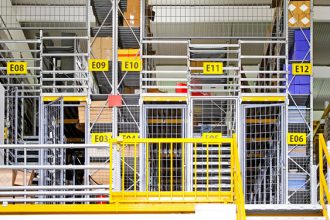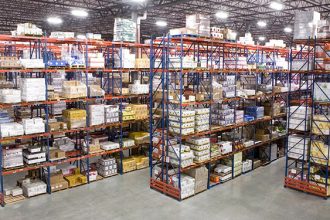Protective Guarding For Pallet Rack Safeguards Against System Damage, Personnel Injury
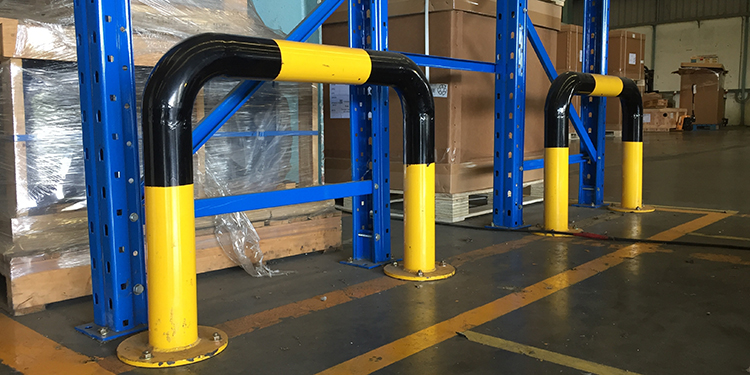
Designed and engineered to be structurally sound and safely support specific pallet loads, industrial steel storage racks can still be vulnerable to impacts from forklift trucks or other moving equipment. Further, unpalletized product falling from upper levels can pose a potential injury risk to personnel. It’s also imperative to protect workers stationed in pallet rack-based pick modules from falling through openings. Adding protective guarding for pallet rack, offered in a variety of systems and devices, safeguards both racks and personnel. If not incorporated during installation, they can be a retrofit to an existing pallet rack system.
Several of these accessory components are listed in RMI’s publication, “Considerations for the Planning and Use of Industrial Steel Storage Racks,” in section 3.4.2. Additionally, the members of the Protective Guarding Manufacturers Association (ProGMA) have published a Protective Guarding Checklist and curate a Protective Guarding Search Tool. Both feature a range of solutions specifically designed as protective guarding for pallet rack.
Protective Guarding for Pallet Rack Shields Against Impacts
Rack guards and rack leg protectors applied to the aisle-side facing uprights protect rack columns. These can be steel plates wrapped around and welded to the face and sides of the rack column. Alternately, steel, foam, or plastic guards attach directly to the rack column with bolts, rivets, or straps.
Guarding positioned at the ends of rack rows—where traffic is typically heaviest, and forklifts turn corners frequently—can deter and deflect impacts. Common types include:
- Kerbing/bumpers made of steel or plastic pipe or tube formed or welded into an inverted U-shape. These tubes run the full depth of the rack assembly and are typically factory welded to the steel base plates or anchored to the floor.
- Bollards or industrial facility protection guardrails are free standing, set a short distance away from the racking, and anchored to the floor. Placement is typically as close to the rack as possible to minimize intrusion into travel aisles.
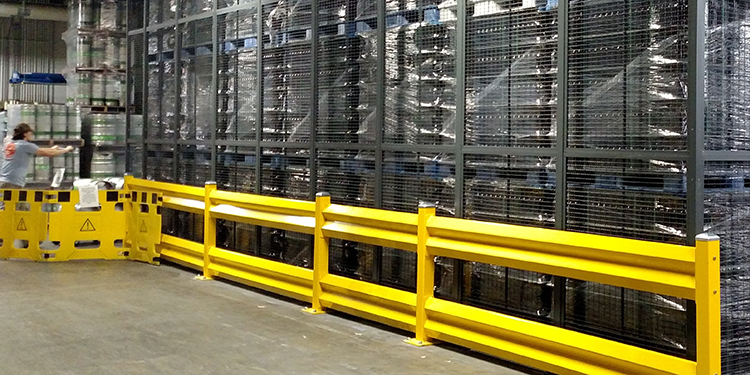
Protective Guarding for Pallet Rack Contains Products
Equipment for product containment within pallet rack includes flexible safety netting and rigid steel mesh panels, both of which are attached to the rack structure itself. Should a product fall off a pallet, these systems prevent it from reaching the floor.
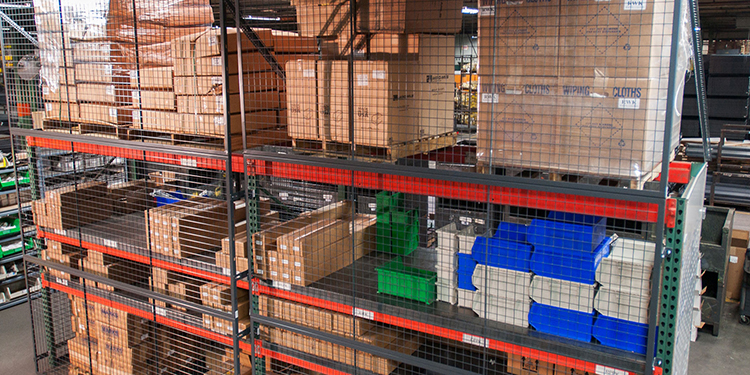
Protective Guarding for Pallet Rack Keeps Workers in Pick Modules Safe
Devices that protect workers from falls off elevated, rack-supported pick modules and work platforms include industrial pedestrian guardrails, installed around the perimeter of the work area. Guidelines on the installation and use of guardrails in these applications are in two separate RMI publications:
- RMI’s ANSI MH16.1: Specification for the Design, Testing and Utilization of Industrial Steel Storage Racks
- ANSI MH32.1: Stairs, Ladders, and Open-Edge Guards for Use with Material Handling Structures, developed by RMI in partnership with the Storage Manufacturers Association (SMA)
Additionally, kickplates mounted at the edge of elevated platforms prevent items from rolling off. Also, to secure access openings on elevated pick modules, safety gates, pallet drop gates, and pallet flow gates are available.
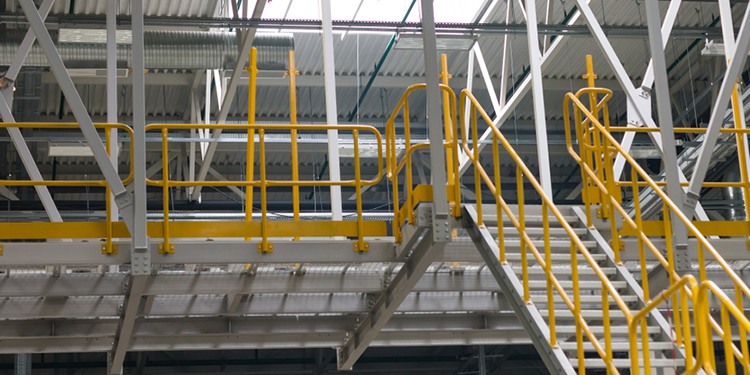
How to Identify Areas Needing Protective Guarding for Pallet Rack
Operations seeking to enhance the safety of personnel and protect their existing racking structures should walk through the facility’s pallet rack with a professional, recommended Aaron Conway, President of ProGMA member Mezzanine Safeti-Gates. “Whether it’s the manufacturer, the systems integrator, the rack dealer or distributor, an independent safety consultant, a member of ProGMA, or a member of the Rack Manufacturers Institute (RMI), an outside expert can help to identify areas with the highest potential hazards,” he said.
“Look for areas where the facility layout or process flow is different than before,” he continued. “For example, if the installation of a new piece of production equipment alters the traffic pattern and causes forklifts to drive much closer to racks—or where product falling off rack might cause damage to that new machinery—those are ideal areas to add protective guarding.”
Additionally, it’s a best safety practice for managers or supervisors to conduct regular visual inspections. They should examine both the pallet rack system and associated guarding to identify signs of damage. Further, training forklift drivers to be aware of their surroundings can help reduce impact risks. Also, train associates to promptly report any impacts, rack damage, or fallen product they observe, Conway advised.
“If there’s an area of pallet rack where damage routinely appears, or where product falls frequently, those are signs that it’s time to add a protective guarding solution,” Conway noted.
That said, not every row of rack needs guarding, nor does one type of guarding solve every problem, he continued. “Areas where there is very little traffic, or slower moving products, may not need any guarding at all. Or areas visited only by smaller powered pallet jacks won’t need as much protection as those where larger forklifts move in and out throughout every shift.”
Looking for a list of the full range of protective accessories available for racking installations?
RMI’s publication, “Considerations for the Planning and Use of Industrial Steel Storage Racks,” lists more than 20 different options in section 3.4.2.

